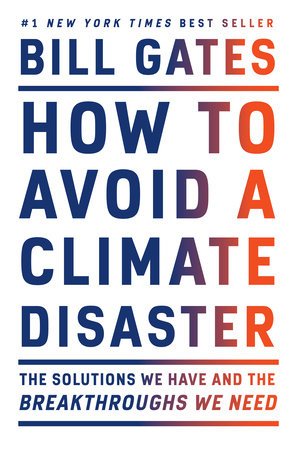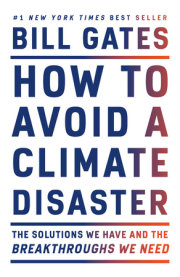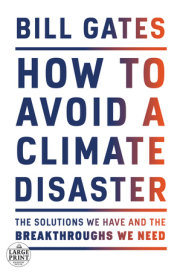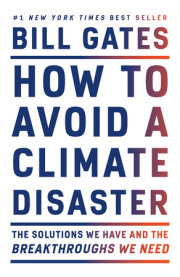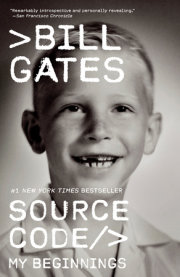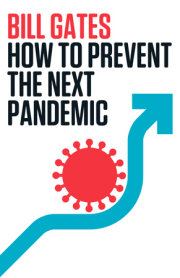There are two numbers you need to know about climate change. The first is 51 billion. The other is zero.
Fifty-one billion is how many tons of greenhouse gases the world typically adds to the atmosphere every year. Although the figure may go up or down a bit from year to year, it’s generally increasing. This is
where we are today.
Zero is
what we need to aim for. To stop the warming and avoid the worst effects of climate change—and these effects will be very bad—humans need to stop adding greenhouse gases to the atmosphere.
This sounds difficult, because it will be. The world has never done anything quite this big. Every country will need to change its ways. Virtually every activity in modern life—growing things, making things, getting around from place to place—involves releasing greenhouse gases, and as time goes on, more people will be living this modern lifestyle. That’s good, because it means their lives are getting better. Yet if nothing else changes, the world will keep producing greenhouse gases, climate change will keep getting worse, and the impact on humans will in all likelihood be catastrophic.
But “if nothing else changes” is a big If. I believe that things
can change. We already have some of the tools we need, and as for those we don’t yet have, everything I’ve learned about climate and technology makes me optimistic that we can invent them, deploy them, and, if we act fast enough, avoid a climate catastrophe.
This book is about what it will take and why I think we can do it.
Two decades ago, I would never have predicted that one day I would be talking in public about climate change, much less writing a book about it. My background is in software, not climate science, and these days my full-time job is working with my wife, Melinda, at the Gates Foundation, where we are super-focused on global health, development, and U.S. education.
I came to focus on climate change in an indirect way—through the problem of energy poverty.
In the early 2000s, when our foundation was just starting out, I began traveling to low-income countries in sub-Saharan Africa and South Asia so I could learn more about child mortality, HIV, and the other big problems we were working on. But my mind was not always on diseases. I would fly into major cities, look out the window, and think,
Why is it so dark out there? Where are all the lights I’d see if this were New York, Paris, or Beijing? In Lagos, Nigeria, I traveled down unlit streets where people were huddling around fires they had built in old oil barrels. In remote villages, Melinda and I met women and girls who spent hours every day collecting firewood so they could cook over an open flame in their homes. We met kids who did their homework by candlelight because their homes didn’t have electricity.
I learned that about a billion people didn’t have reliable access to electricity and that half of them lived in sub-Saharan Africa. (The picture has improved a bit since then; today roughly 860 million people don’t have electricity.) I thought about our foundation’s motto—“Everyone deserves the chance to live a healthy and productive life”—and how it’s hard to stay healthy if your local medical clinic can’t keep vaccines cold because the refrigerators don’t work. It’s hard to be productive if you don’t have lights to read by. And it’s impossible to build an economy where everyone has job opportunities if you don’t have massive amounts of reliable, affordable electricity for offices, factories, and call centers.
As all this information sank in, I began to think about how the world could make energy affordable and reliable for the poor. It didn’t make sense for our foundation to take on this huge problem— we needed it to stay focused on its core mission—but I started kicking around ideas with some inventor friends of mine. I read more deeply on the subject, including several eye-opening books by the scientist and historian Vaclav Smil, who helped me understand just how critical energy is to modern civilization.
At the time, I didn’t understand that we needed to get to zero. The rich countries that are responsible for most emissions were starting to pay attention to climate change, and I thought that would be enough. My contribution, I believed, would be to advocate for making reliable energy affordable for the poor.
For one thing, they have the most to gain from it. Cheaper energy would mean not only lights at night but also cheaper fertilizer for their fields and cement for their homes. And when it comes to climate change, the poor have the most to lose. The majority of them are farmers who already live on the edge and can’t withstand more droughts and floods.
Things changed for me in late 2006 when I met with two former Microsoft colleagues who were starting nonprofits focused on energy and climate. They brought along two climate scientists who were well versed in the issues, and the four of them showed me the data connecting greenhouse gas emissions to climate change.
I knew that greenhouse gases were making the temperature rise, but I had assumed that there were cyclical variations or other fac- tors that would naturally prevent a true climate disaster. And it was hard to accept that as long as humans kept emitting any amount of greenhouse gases, temperatures would keep going up.
I went back to the group several times with follow-up questions. Eventually it sank in. The world needs to provide more energy so the poorest can thrive, but we need to provide that energy without releasing any more greenhouse gases.
Now the problem seemed even harder. It wasn’t enough to deliver cheap, reliable energy for the poor. It also had to be clean.
I kept learning everything I could about climate change. I met with experts on climate and energy, agriculture, oceans, sea levels, glaciers, power lines, and more. I read the reports issued by the Intergovernmental Panel on Climate Change (IPCC), the UN panel that establishes the scientific consensus on this subject. I watched
Earth’s Changing Climate, a series of fantastic video lectures by Professor Richard Wolfson available through the Great Courses series. I read
Weather for Dummies, still one of the best books on weather that I’ve found.
One thing that became clear to me was that our current sources of renewable energy—wind and solar, mostly—could make a big dent in the problem, but we weren’t doing enough to deploy them.
It also became clear why, on their own, they aren’t enough to get us all the way to zero. The wind doesn’t always blow and the sun doesn’t always shine, and we don’t have affordable batteries that can store city-sized amounts of energy for long enough. Besides, making electricity accounts for only 27 percent of all greenhouse gas emissions. Even if we had a huge breakthrough in batteries, we would still need to get rid of the other 73 percent.
Within a few years, I had become convinced of three things:
1. To avoid a climate disaster, we have to get to zero.
2. We need to deploy the tools we already have, like solar and wind, faster and smarter.
3. And we need to create and roll out breakthrough technologies that can take us the rest of the way.
The case for zero was, and is, rock solid. Unless we stop adding greenhouse gases to the atmosphere, the temperature will keep going up. Here’s an analogy that’s especially helpful: The climate is like a bathtub that’s slowly filling up with water. Even if we slow the flow of water to a trickle, the tub will eventually fill up and water will come spilling out onto the floor. That’s the disaster we have to prevent. Setting a goal to only reduce our emissions—but not eliminate them—won’t do it. The only sensible goal is zero
Copyright © 2021 by Bill Gates. All rights reserved. No part of this excerpt may be reproduced or reprinted without permission in writing from the publisher.

